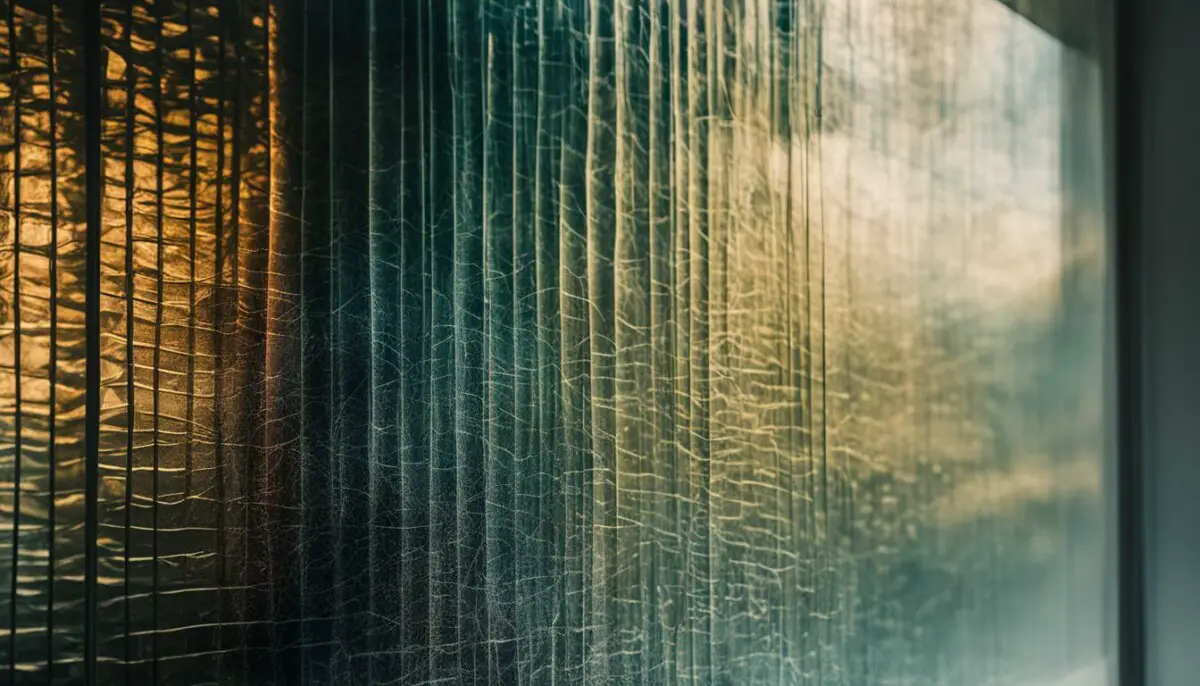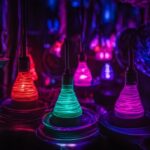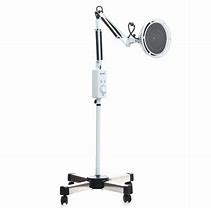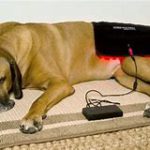Last Updated on 5 months by Francis
Welcome to our latest exploration into the fascinating world of infrared signals and tinted glass. In this article, we delve into the question of whether tinted windows can distort these crucial signals used in various applications, including night vision technology and security cameras. Let’s uncover the truth behind the interaction between infrared signals and tinted glass and discover the potential solutions to enhance their performance.
Contents
Key Takeaways:
- Tinted windows can potentially hinder the transmission of infrared signals, affecting the effectiveness of night vision technology and security cameras.
- Advanced infrared sensors and multi-spectral fusion technology can improve night vision performance through tinted windows.
- Upgraded sensors, adaptive display settings, and infrared cameras are potential solutions to mitigate the impact of tinted glass on infrared signals.
- Tinted windows offer benefits such as sun protection, glare reduction, privacy, and security, but compliance with local regulations is essential.
- When using security cameras indoors, legal and ethical considerations regarding privacy should be taken into account.
Understanding Night Vision Technology and Tinted Car Windows
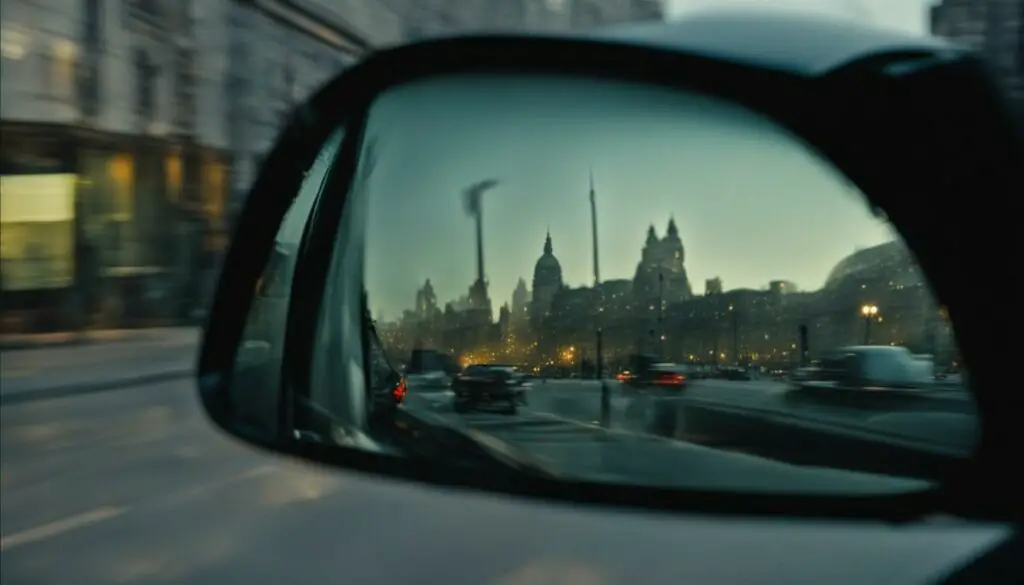
Night vision technology is widely used in various applications, including security surveillance and automotive safety. It relies on infrared (IR) technology to detect and capture the heat emitted by objects, allowing for enhanced visibility in low-light conditions or complete darkness.
However, when it comes to tinted car windows, the effectiveness of night vision systems can be impacted. Tinted windows are designed to reduce visible light transmission, which can potentially affect the performance of IR-based night vision systems that rely on capturing IR emissions.
The degree of tinting, measured by the Visible Light Transmission (VLT) percentage, determines the amount of visible light allowed to pass through the glass. The darker the tint, the less visible light and IR radiation can penetrate the window, which can limit the effectiveness of night vision technology.
Despite these challenges, advancements in IR sensors and multi-spectral fusion technology have improved night vision performance in the presence of tinted windows. Upgraded sensors can detect lower levels of IR radiation, enhancing the sensitivity of the system. Multi-spectral fusion combines data from different wavelengths to provide a clearer and more comprehensive view. These advancements, coupled with adaptive display settings that optimize the display based on the level of tinting and ambient light conditions, have mitigated the impact of tinted windows on night vision systems.
Tinted Car Windows and Visible Light Transmission
| Tint Darkness Level | Visible Light Transmission (VLT) Percentage | Impact on Night Vision Technology |
|---|---|---|
| Light Tint | 50% – 70% | Minimal impact on night vision performance |
| Medium Tint | 30% – 50% | Moderate impact on night vision performance |
| Dark Tint | less than 30% | Significant impact on night vision performance |
Quote: “Tinted windows reduce visible light transmission, which can potentially affect the performance of night vision systems that rely on capturing infrared emissions.”
While tinted car windows offer benefits such as sun protection and reduced glare, it’s important to consider their impact on night vision technology. Understanding the relationship between IR technology and tinted windows can help vehicle owners make informed decisions about the trade-offs between visual comfort and safety when it comes to night driving.
Challenges with Infrared Signal Penetration through Tinted Car Windows
Tinted car windows pose challenges for the transmission of infrared signals, affecting the performance of night vision technology. The degree of tinting determines the amount of visible light that can pass through the glass, as measured by the Visible Light Transmission (VLT) percentage. While tinted windows are designed to reduce visible light, they can also impede the transmission of infrared light into the vehicle.
Excessive tinting can lead to a significant drop in visible light levels, making it difficult for night vision systems to distinguish between objects in the driver’s field of view. The reduction in visible light affects the ability of the system to accurately detect heat emitted by objects and capture clear images. As a result, the effectiveness of night vision technology can be compromised in situations where tinted windows are present.
To overcome these challenges, advancements in infrared sensors have been developed. Upgraded sensors can detect lower levels of infrared radiation, enhancing the sensitivity of night vision systems and compensating for the reduced transmission caused by tinted windows. Another solution is the integration of multi-spectral fusion, which combines data from different wavelengths to improve night vision performance. Adaptive display settings that dynamically adjust based on the level of tinting and ambient light conditions can also optimize the display for different scenarios.
The impact of tinted windows on night vision performance
“Excessive tinting can lead to a significant drop in visible light levels, making it difficult for night vision systems to distinguish between objects in the driver’s field of view.”
| Tint Darkness | Visible Light Transmission (VLT) Percentage | Effect on Infrared Signal Transmission |
|---|---|---|
| Light tint | 70-90% | Minor impact on infrared signal transmission |
| Medium tint | 40-70% | Reduced infrared signal transmission |
| Dark tint | 20-40% | Significant reduction in infrared signal transmission |
| Limousine tint | 5-20% | Severely limited infrared signal transmission |
The table above illustrates how different levels of tint darkness impact visible light transmission and infrared signal transmission. The darker the tint, the more it restricts both visible light and infrared signal transmission. It’s important for car owners to consider the trade-off between the desired level of tint and the potential impact on night vision performance.
Potential Solutions for Improved Night Vision Performance through Tinted Windows

When it comes to improving night vision performance through tinted windows, there are several potential solutions that can enhance the effectiveness of infrared technology. Upgraded night vision sensors, multi-spectral fusion, and adaptive display settings are among the advancements that can address the challenges posed by tinted windows.
Upgraded Night Vision Sensors
One potential solution is to utilize upgraded night vision sensors that are designed to detect lower levels of infrared radiation. These sensors can enhance the sensitivity of the night vision system, compensating for the reduced infrared transmission caused by tinted windows. By detecting even the faintest traces of infrared emissions, these sensors can improve the visibility and image quality in low-light conditions.
Multi-Spectral Fusion
Another approach to improve night vision performance through tinted windows is the integration of multi-spectral fusion technology. This technique involves combining data from different wavelengths, including infrared, to create a more comprehensive and detailed image. By fusing information from multiple sources, the system can overcome the limitations imposed by tinted windows and provide a clearer representation of the environment.
Adaptive Display Settings
Adaptive display settings can also play a crucial role in optimizing night vision performance through tinted windows. By dynamically adjusting the display based on the level of tinting and ambient light conditions, the system can optimize the image for different scenarios. This feature ensures that the displayed image remains clear and visible, even when faced with the challenges posed by tinted windows.
In summary, upgraded night vision sensors, multi-spectral fusion, and adaptive display settings are potential solutions that can enhance the performance of night vision systems through tinted windows. These advancements address the challenges posed by reduced infrared transmission and ensure optimal visibility in low-light conditions. By incorporating these technologies, night vision systems can provide clearer and more accurate images, even when faced with the hindrances presented by tinted windows.
Sun Protection, Glare Reduction, Privacy, and Security: The Benefits and Limitations of Tinted Windows
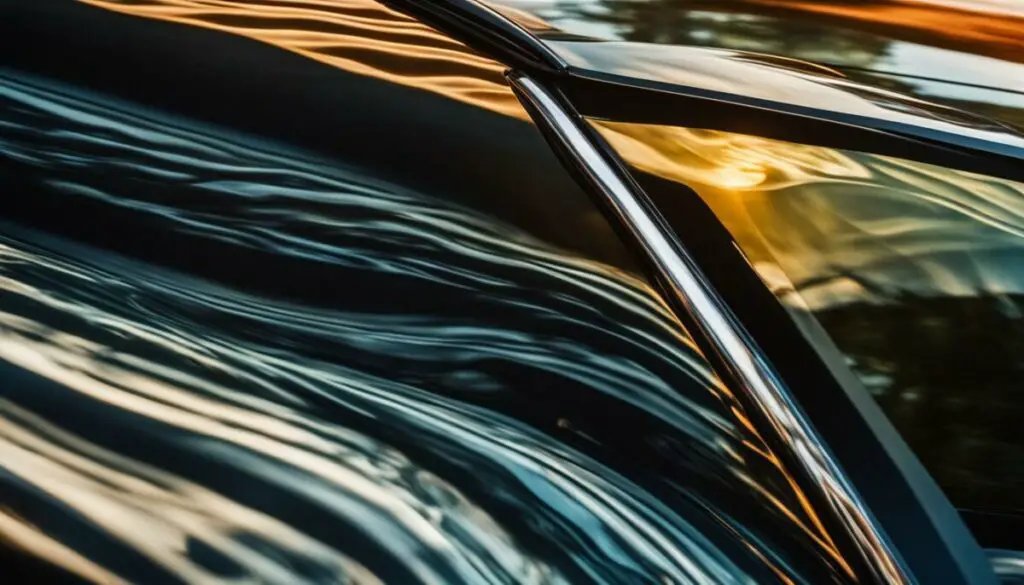
Tinted windows offer a range of benefits, including sun protection, glare reduction, improved privacy, and enhanced security. These advantages make tinted windows a popular choice for both vehicles and buildings. However, it’s important to understand the limitations and consider legal considerations when opting for tinted windows.
One of the key benefits of tinted windows is sun protection. The tint film applied to the glass helps block harmful UV rays, reducing the risk of skin damage and interior fading. This protection is especially valuable for individuals who spend long hours in their vehicles or work in spaces with large windows exposed to direct sunlight.
Tinted windows also provide glare reduction, minimizing the blinding effect of bright sunlight or headlights. By reducing glare, tinted windows enhance visibility, making driving safer and more comfortable. This is particularly beneficial during the daytime or in areas with intense sunshine.
“The privacy and security offered by tinted windows are important considerations for many individuals. Tinted windows prevent prying eyes from easily seeing into the vehicle or building, protecting personal belongings and enhancing one’s sense of privacy.”
The privacy and security offered by tinted windows are important considerations for many individuals. Tinted windows prevent prying eyes from easily seeing into the vehicle or building, protecting personal belongings and enhancing one’s sense of privacy. This is particularly relevant in urban environments or areas with high foot or vehicle traffic.
However, it’s crucial to be aware of legal considerations when installing tinted windows. Different jurisdictions have specific regulations regarding tint darkness and reflectivity. Compliance with these regulations ensures safe visibility for both drivers and law enforcement officers. Violating these regulations can result in fines or penalties, underscoring the importance of understanding and adhering to local laws.
The Benefits and Limitations of Tinted Windows:
| Benefits | Limitations |
|---|---|
|
|
The Interaction between Night Vision Devices and Tinted Windows
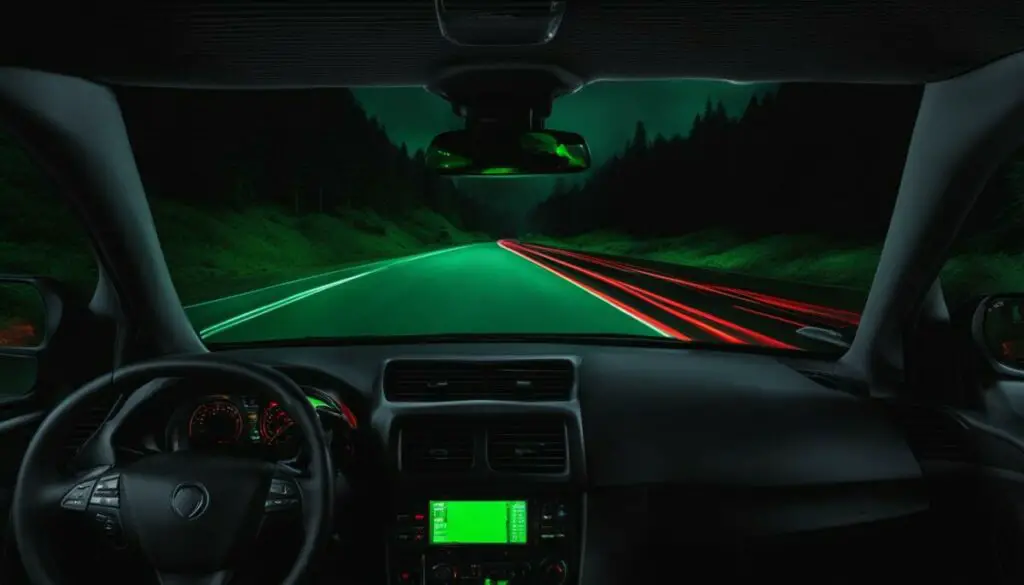
When it comes to using night vision devices through tinted windows, several factors come into play. The physical properties of tinted glass and the specific wavelengths of light used in night vision technology can result in interference and calibration challenges, leading to distorted images or even complete obstruction of night vision capabilities.
Tinted windows are designed to reduce visible light transmission, which can potentially affect the performance of night vision systems. Infrared wavelengths, which are crucial for night vision devices, can be impeded by certain types of tinting, hindering the system’s ability to detect and capture infrared emissions from objects.
The degree of tinting and the composition of the tint can significantly impact the effectiveness of night vision technology. Excessive tinting can lead to a drop in visible light levels, making it challenging for the system to distinguish between objects in the driver’s field of view. Additionally, variations in tint darkness and quality can further affect the accuracy and reliability of night vision devices.
Interference and calibration challenges can impact the accuracy and reliability of night vision devices when used through tinted windows.
To mitigate these challenges, technological advancements have been made. Upgraded infrared sensors that can detect lower levels of IR radiation can enhance the sensitivity of night vision systems and compensate for reduced IR transmission caused by tinted windows. Multi-spectral fusion, which combines data from different wavelengths, can also improve night vision performance. Additionally, adaptive display settings that dynamically adjust based on the level of tinting and ambient light conditions can optimize the display for different scenarios.
Factors Affecting Night Vision Performance through Tinted Windows
When considering the interaction between night vision devices and tinted windows, it’s essential to consider the following factors:
- The degree of tinting: The level of darkness and the quality of the tint can impact the amount of visible light and infrared transmission.
- Composition of the tint: Different types of tint may have varying effects on the transmission of infrared wavelengths.
- Physical properties of tinted glass: The specific properties of the glass, such as reflectivity and opacity, can affect the performance of night vision technology.
- Interference and calibration challenges: The combination of tinted glass and night vision devices can lead to interference and calibration issues, resulting in distorted images or limited visibility.
| Factors | Effects |
|---|---|
| The degree of tinting | Reduces visible light and can potentially hinder infrared transmission |
| Composition of the tint | Varies in its impact on infrared wavelengths |
| Physical properties of tinted glass | Can contribute to interference and calibration challenges |
Can Security Cameras See Through Tinted Windows?
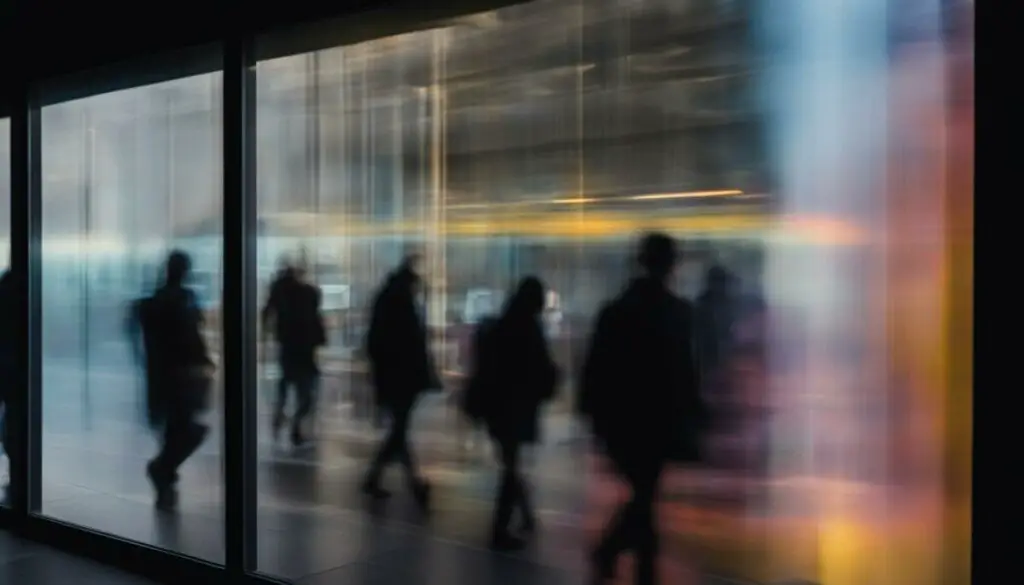
When it comes to security cameras and tinted windows, several factors determine the camera’s ability to see through them. First, let’s consider the type of camera being used. Some security cameras are specifically designed to work better behind windows, while others may not perform well in such conditions. Additionally, the location of the window plays a crucial role. If the window is facing direct sunlight or if there is glare or reflection, it can hinder the camera’s ability to capture clear footage.
It’s important to note that tinted windows can affect the transmission of light, including infrared, which is often used by security cameras for night vision. The darkness level of the tinted glass, measured in Visible Light Transmission (VLT) percentage, determines the amount of visible light allowed to pass through. This can impact the camera’s ability to capture clear images, especially in low light conditions.
In some cases, security cameras may still be able to capture usable footage through tinted windows, but it’s essential to consider the potential challenges. Factors such as the type of camera, the location of the window, and the presence of glare or reflection can all impact the camera’s performance. To ensure optimal results, it’s recommended to choose a camera specifically designed for use through windows, position the camera at an angle to minimize glare and reflection, and consider using an infrared camera for enhanced night vision capabilities.
| Factors Affecting Camera Performance | Tinted Window Conditions |
|---|---|
| Camera Type | Some cameras are designed for use through windows, while others may not perform well |
| Window Location | Direct sunlight and glare/reflection can impact camera performance |
| Type of Glass | Tinted glass reduces visible light transmission, affecting camera performance |
“The type of camera, type of glass (tinted or reflective), and camera position all affect a security camera’s ability to see through windows.”
By considering these factors and taking appropriate measures, it is possible to improve the view of security cameras through tinted windows. This can help ensure better surveillance and security in various settings, including homes, offices, and public spaces.
Factors and Tips for Improving Security Cameras’ View through Windows
When it comes to capturing clear footage through windows, several factors must be considered to optimize security camera performance. The type of camera, type of glass, and camera position all play a crucial role in achieving the best results. Here are some important tips to enhance the view through windows:
- Choose the right camera type: Not all security cameras are designed to work effectively through windows. Look for cameras specifically designed for this purpose, such as those equipped with a varifocal lens or a remote viewing capability. These cameras are equipped to handle challenges like glare and reflection.
- Consider the type of glass: The type of glass used in windows can greatly impact camera performance. Tinted or reflective glass can introduce additional challenges due to reduced light transmission or increased glare. Opt for low-glare glass or consider using an anti-reflective coating to minimize interference.
- Optimize camera position: The positioning of the camera is crucial for capturing a clear view through windows. Place the camera at an angle to minimize the likelihood of glare and reflection. Experiment with different angles to find the optimal position for your specific setup.
- Try an infrared camera: Infrared (IR) cameras utilize infrared light to capture images in low-light conditions. They can be particularly effective for capturing footage through windows at night, as they rely less on visible light and are less susceptible to interference from glare or reflection.
By considering these factors and implementing the appropriate tips, you can significantly improve the performance of security cameras when capturing footage through windows. Remember to test and adjust the camera settings to ensure optimal results in different lighting conditions.
Privacy Concerns when Using Security Cameras Indoors
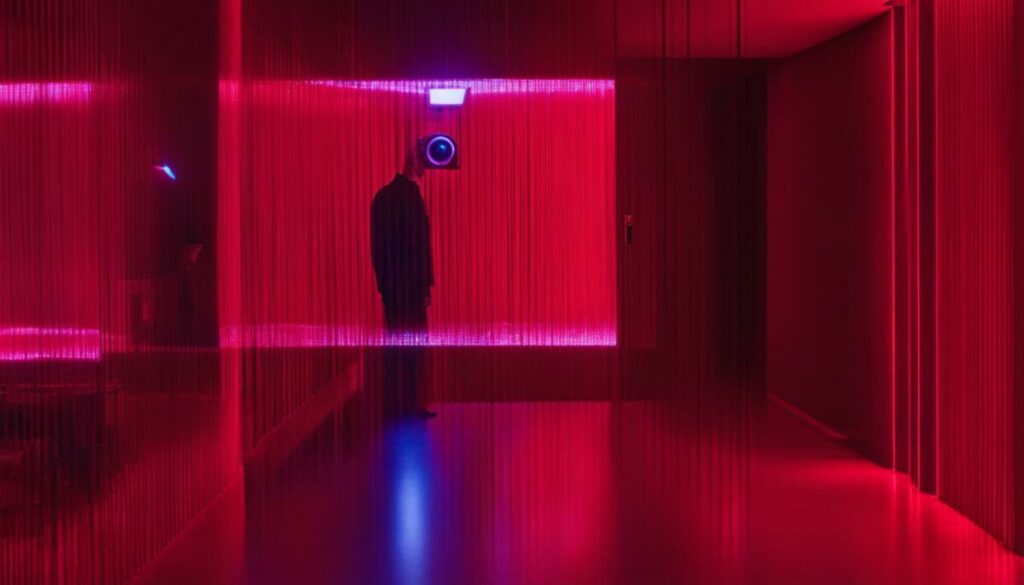
When incorporating security cameras indoors, it is important to consider the legal and ethical implications surrounding privacy concerns. Capturing footage through windows, especially towards neighboring properties or public spaces, raises potential issues that need to be addressed.
From a legal standpoint, it is crucial to understand and comply with consent and privacy laws regarding video surveillance. Different jurisdictions may have specific regulations governing the collection, use, and storage of video footage. It is essential to be aware of these laws and obtain proper consent when necessary to avoid legal consequences.
Ethically, capturing footage through windows can be seen as an invasion of privacy. It is important to respect the boundaries of others and ensure that the use of security cameras does not infringe on the privacy rights of individuals. Taking steps to mitigate privacy concerns, such as positioning cameras to minimize the capture of private areas and sensitive information, is crucial.
“The use of security cameras indoors brings about various privacy considerations. It’s essential to navigate this technology responsibly, respecting both legal requirements and the privacy rights of individuals.” – Privacy Advocate
Ultimately, striking a balance between security and privacy is important when using security cameras indoors. By being mindful of legal considerations, understanding ethical implications, and taking steps to respect privacy rights, individuals can ensure that they are using security cameras responsibly and in a way that maintains the trust and respect of those within their environment.
| Legal Considerations | Ethical Considerations | Privacy Concerns | Capturing Footage through Windows |
|---|---|---|---|
| Complying with consent and privacy laws | Respecting privacy rights of individuals | Invasion of privacy | Potential issues and challenges |
| Understanding jurisdiction-specific regulations | Minimizing capture of private areas | Legal consequences | Obtaining proper consent |
| Ensuring proper storage and use of video footage | Maintaining trust and respect | Privacy rights of individuals | Mitigating privacy concerns |
Key Points:
- Using security cameras indoors raises legal and ethical considerations.
- Capturing footage through windows can infringe on privacy rights.
- Compliance with consent and privacy laws is essential.
- Respecting privacy boundaries and minimizing capture of private areas is important.
- Striking a balance between security and privacy is crucial for responsible camera use.
The Use of Infrared Photography for Archaeological Surveys
Infrared photography plays a crucial role in modern archaeological surveys, providing valuable insights into hidden archaeological features and landscapes. By capturing images beyond the visible spectrum, infrared photography offers a unique perspective that enhances our understanding of archaeological sites. One such noteworthy survey project that utilizes infrared photography is the Potenza Valley Survey, conducted in Italy and Belgium.
The Potenza Valley Survey employs oblique aerial photography to capture both regular and infrared images of archaeological landscapes. This approach allows researchers to identify and map previously unknown archaeological features, including buried structures, ancient pathways, and vegetation patterns. By analyzing the infrared view of the landscape, researchers can discern variations in heat distribution, which may indicate the presence of archaeological remains.
One of the significant advantages of using infrared photography in archaeological surveys is its ability to penetrate ground cover and reveal hidden features. Vegetation and soil composition can often obscure archaeological structures, making them difficult to identify using traditional methods. However, with infrared photography, these hidden features can be detected, providing valuable data for archaeological interpretation and site management.
Infrared photography in archaeological surveys has revolutionized our ability to understand and interpret ancient sites. By capturing images beyond the visible spectrum, we can uncover hidden archaeological features and gain new insights into past civilizations.
By studying the infrared images captured during the Potenza Valley Survey, archaeologists can make informed decisions regarding excavation sites and prioritize areas of interest. This multidisciplinary approach, combining oblique aerial photography and infrared imagery, has proven to be a powerful tool in archaeological research, allowing for detailed mapping and analysis of complex landscapes.
| Advantages of Infrared Photography in Archaeological Surveys | Examples |
|---|---|
| Revealing hidden archaeological features | Identification of buried structures and pathways |
| Enhanced landscape mapping | Analysis of variations in heat distribution |
| Detection of obscured features | Identification of vegetation patterns and soil compositions |
As the field of archaeology continues to evolve, the integration of infrared photography into survey techniques provides a wealth of new knowledge and discoveries. The Potenza Valley Survey exemplifies the power of this technology in mapping ancient landscapes and uncovering hidden archaeological treasures, emphasizing the invaluable role of infrared photography in modern archaeological research.
Conclusion
In conclusion, the impact of tinted glass on the transmission of infrared signals varies depending on various factors. While tinted windows are designed to reduce visible light transmission, they can potentially hinder the effectiveness of night vision technology that relies on infrared signals. However, advancements in infrared sensors and multi-spectral fusion technology have the potential to improve night vision performance even through tinted windows.
It is important to consider the type and intensity of tint when evaluating the impact on infrared signal penetration. Lightly tinted windows may allow limited visibility for modern infrared systems, but heavily tinted windows can significantly impede the transmission of infrared light. Additionally, the level of visible light reduction caused by tinting can also pose challenges in differentiating objects in the driver’s field of view.
To enhance night vision performance through tinted windows, upgrading infrared sensors to detect lower levels of IR radiation can improve sensitivity. Furthermore, integrating multi-spectral fusion technology, which combines data from different wavelengths, can enhance the capabilities of night vision systems. Adaptive display settings that dynamically adjust based on the level of tinting and ambient light conditions can also optimize the display for different scenarios.
In summary, while tinted windows can potentially affect the transmission of infrared signals, advancements in technology provide solutions to enhance night vision performance. By leveraging upgraded sensors, multi-spectral fusion, and adaptive display settings, night vision systems can overcome the challenges posed by tinted windows and continue to provide reliable visibility in low-light conditions.
FAQ
Are infrared signals distorted by tinted glass?
The effectiveness of infrared signals in penetrating tinted glass varies depending on factors like the type of tint, the strength of the infrared technology, and ambient light conditions. While some modern infrared systems may provide limited visibility through lightly tinted windows, it’s important to remember that tinted windows are designed to reduce visible light transmission.
How does tinted glass affect night vision technology?
Tinted car windows reduce visible light transmission, which can potentially affect the performance of night vision systems that rely on capturing infrared (IR) emissions. The degree of tinting, measured in Visible Light Transmission (VLT) percentage, determines the amount of visible light allowed to pass through the glass.
What challenges are there with infrared signal penetration through tinted car windows?
Tinted car windows can impede the transmission of infrared light into the vehicle, hindering the effectiveness of night vision technology. Excessive tinting can also lead to a significant drop in visible light levels, making it challenging for the system to distinguish between objects in the driver’s field of view.
Are there any solutions to improve night vision performance through tinted windows?
Upgraded infrared sensors that can detect lower levels of IR radiation can enhance the sensitivity of night vision systems and compensate for reduced IR transmission caused by tinted windows. Integrating multi-spectral imaging, which combines data from different wavelengths, can also improve night vision performance. Adaptive display settings that dynamically adjust based on the level of tinting and ambient light conditions can optimize the display for different scenarios.
What are the benefits and limitations of tinted windows?
Tinted windows offer benefits such as protection against harmful UV rays, glare reduction, enhanced privacy and security, and improved optical clarity. The effectiveness of these benefits depends on factors such as the darkness level and quality of the tint. However, it’s important to comply with local regulations regarding tint darkness and reflectivity to ensure safe visibility for both drivers and law enforcement officers.
How does the interaction between night vision devices and tinted windows affect performance?
The interaction between night vision devices and tinted windows can result in distortions, image degradation, or even complete obstruction of night vision capabilities. The specific wavelengths of light affected by both technologies, as well as the physical properties of tinted glass, contribute to these effects. Interference and calibration challenges can further impact the accuracy and reliability of night vision devices when used through tinted windows.
Can security cameras see through tinted windows?
The ability of security cameras to see through tinted windows depends on factors such as the type of camera, the location of the window, and the presence of glare or reflection. Some cameras are designed to work better behind windows, while others may not be suitable for use through a window. Factors like dirty or sun-facing windows can also affect the camera’s ability to capture clear footage.
What factors and tips can improve security cameras’ view through windows?
The type of camera, type of glass (tinted or reflective), and camera position all affect a security camera’s ability to see through windows. Choosing a camera specifically designed for use through windows and ensuring clean, low-glare glass can improve camera performance. Positioning the camera at an angle and using an infrared camera can also help mitigate issues with glare and reflection.
What are the privacy concerns when using security cameras indoors?
Capturing footage through windows using security cameras raises legal and ethical considerations. Understanding and complying with consent and privacy laws regarding video surveillance is crucial. Additionally, the invasion of privacy when capturing footage through windows, especially towards neighbors or public spaces, should be carefully considered to avoid potential negative consequences.
How is infrared photography used in archaeological surveys?
Infrared photography has proven to be a valuable tool for archaeological surveys. It can reveal additional information compared to traditional visible light imagery. A multidisciplinary survey project, such as the Potenza Valley Survey, utilizes infrared photography to capture both regular and infrared pictures of archaeological landscapes in Italy and Belgium. This construction helps in mapping excavations and enhances the understanding of archaeological and geographical landscapes.
Source Links
- https://securitycamerasystempro.com/can-a-security-camera-see-through-a-window-exploring-the-possibilities/
- https://nightvisionboss.com/can-night-vision-see-through-tinted-windows/
- https://citeseerx.ist.psu.edu/viewdoc/download;jsessionid=FBB01B4476024B3D585B2CE6F1848EA1?doi=10.1.1.732.2175&rep=rep1&type=pdf

